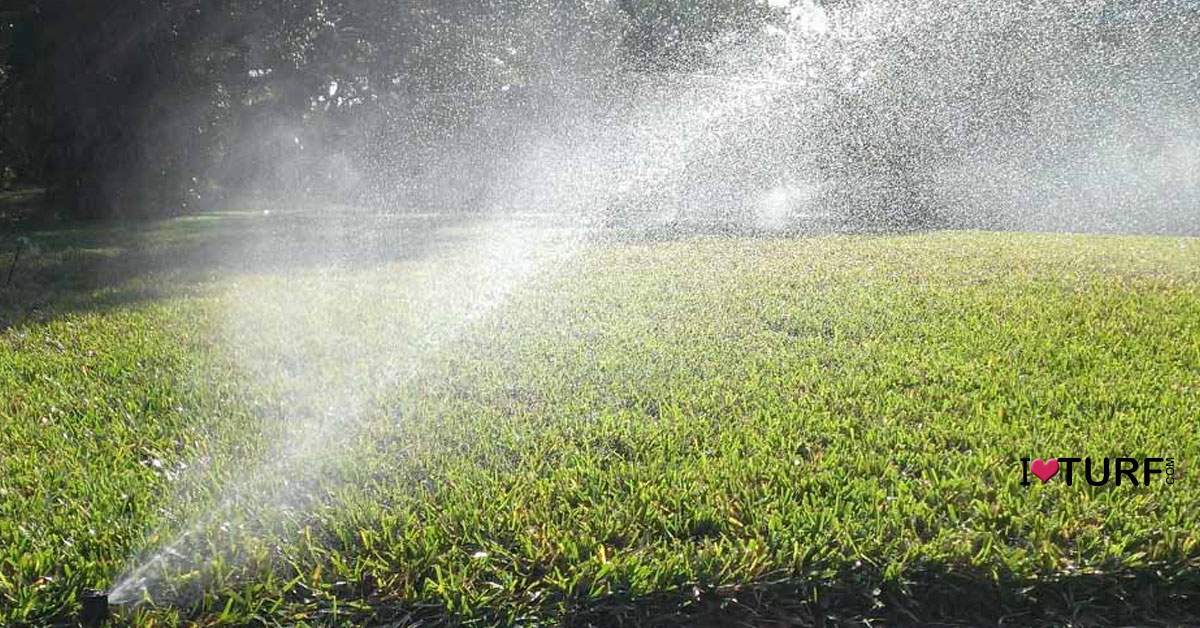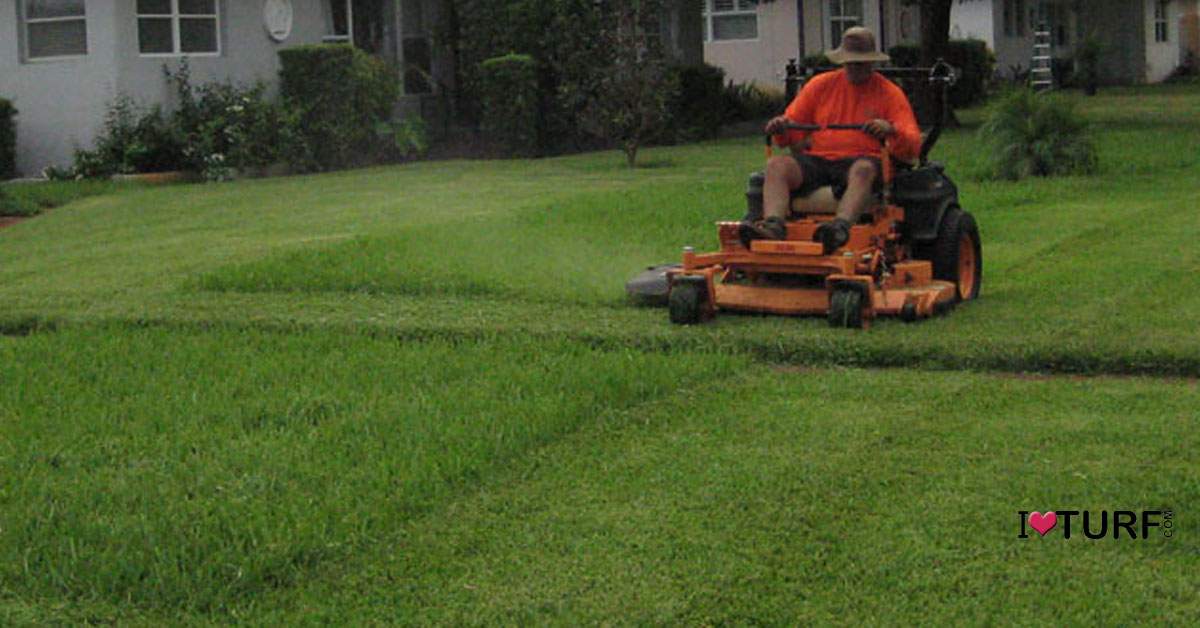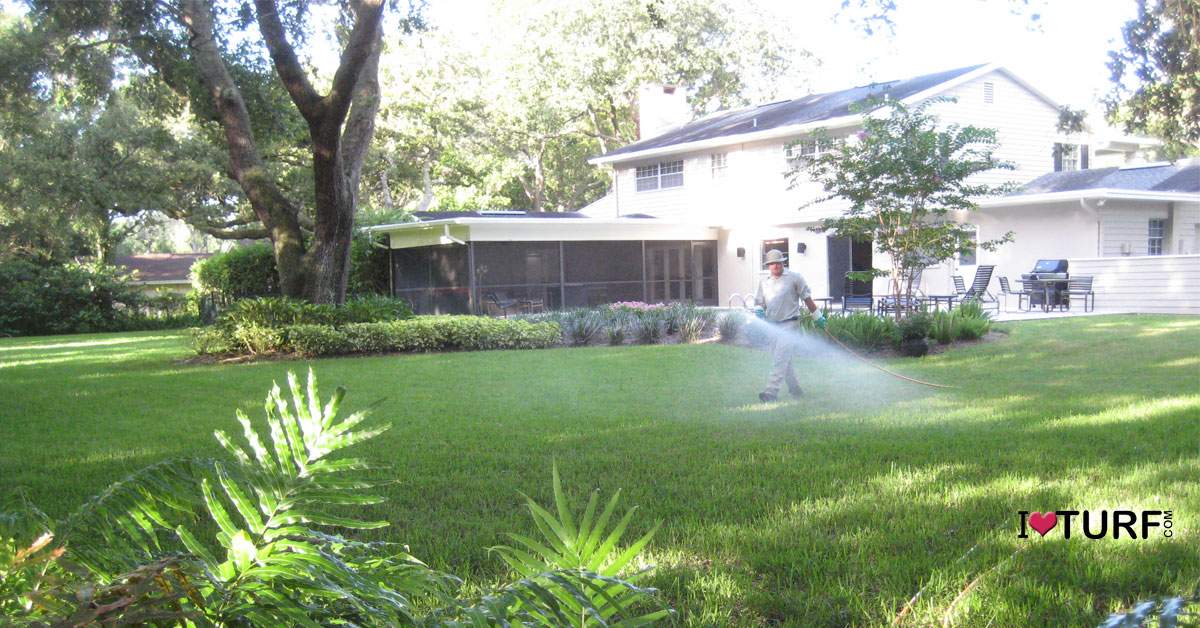
Three fundamentals to a Great St Augustine Lawn
- Watering - Mission Critical - Copious amounts of water is the single most determining factor for the success of your lawn
- Mowing - The Height is Important - Mowing at 4” or higher is mandatory – anything less and expect less of a lawn
- Lawn Spraying - Fertility/Bugs/Weeds - Lawn spraying maintains the fertility at medium levels, protects from insects and reduces weed populations
Water, mowing, and lawn spraying are the three legs of the lawn care stool – remove one of the legs and the stool falls. The next sections cover the three fundamentals in more detail.

#1: Watering
"Step # 1 to a great lawn is a great irrigation system" Rick Orr, Agronomist
Water Myths and Other Nonsense
When it comes to watering your lawn, there are a lot of myths and misinformation being presented as ways to water your lawn. Let’s clear those myths out of the way with facts about lawn watering.
- When you water your lawn from a well, pond, or reclaimed source, you are not wasting water, you are recycling water
- Fungus is a minor problem - usually cosmetic and not lethal - in St Augustine lawns - death by fungus is rare, death by water stress is fast, complete, and common
- Using rain/thundershowers to keep your lawn alive does not work - it never rains often enough to keep a lawn alive.
- Lawns grown in the sandy soils of Pinellas County are nearly impossible to over water - If you over water, you can fix that by cutting the water back, and the lawn recovers. But if you underwater, your lawn will die in hours.
- If you are going to err, err on the side of overwatering
Your Lawn Needs Water – Rain or Irrigation - at Least 3x per week.
In less than 72 hours after rain or irrigation, the sandy soils of Pinellas County will be dry - no longer able to sustain a lawn. In other words, if your lawn goes more than 3 days without rain or irrigation it will start to die – the weak and sunny areas first then shady areas and the healthy areas last.
Sprays = 15 minutes and Rotors = 45 minutes.
There is no one-size-fits-all here – this is a starting point. Adjust for your lawn and landscape. Sunny areas need more – shady areas need less. Weak areas need more – healthy areas need less. And if you are going to err – err on the side of overwatering.
Irrigation: Adjust, Repair, Watch
Water is mission-critical – no water, no lawn. Legally you can check your irrigation for function at any time. Money and time spent on maintaining the irrigation system makes your lawn greener. Pay attention to edges – that is where most of the trouble starts – be sure that you slightly overspray driveways, sidewalks, and patios to ensure the edges get plenty of water.

#2: Mowing
Mow as High as the Mower Will Go
St Augustine lives above ground and requires a tall thick canopy to survive. The above-ground stems (called stolons) form a thick mat lying on top of the soli. The roots grow down and the leaves grow upward. If St Augustine is mowed below 3" the stems and roots will be exposed to the harsh Florida sun - soon to dry out and perish - no stems and roots - no grass!
Fight Back with a 4" Lawn
I have seen a St Augustine lawn go from weedy, thin and ugly to thick, lush and green simply by raising the mower to the highest setting. Many have tried to keep a “tight” lawn and failed. Yet, rarely have I seen trouble on a lawn mowed at 4” or higher.

#3: Fertility, Insects and Weeds (AKA Lawn Spraying)
Lawn Spraying Requires a Bit More than a Trip to Home Depot
Lawn spraying is the most technical of the three fundamentals – and is usually done by professionals. Doesn’t mean you cannot do it yourself – but keep in mind that the learning curve is steep, the variety of products is overwhelming and the cost is often more than hiring a professional.
I am not going into the details for fertilizer, insecticides, and herbicides because it is a deep rabbit hole of products, formulations, application equipment, timing, and more. My best advice is to hire a good local independent lawn spraying company or be willing to spend the time (years) to develop your own programs for fertility and pest control.
Keep the Fertility at Medium Levels
Keeping fertility at medium levels requires frequent but light applications of fertilizers. A lawn can only use so much fertilizer at one time – it does not store up food in a pantry for later use – over-fertilizing is just throwing fertilizer down the drain.
Control Damaging Insects – Chinch Bugs, Grubs, Sod Webworms
Insects are problematic in the warm months – February through October in Pinellas County. Curative treatments happen after the damage is observed and require an insecticide plus lawn repair. Preventative treatments protect the lawn from damage but must be targeted based on the biology of the species to be prevented. Knowing insect biology and the mode of action of insecticides is mandatory for an effective preventative program.
Reduce Weeds
Weeds are a reoccurring problem – there is no “one and done” solution. Your best “herbicide” is a well water, mowed high, medium fertilized, and insect-free lawn. Then, for a healthy lawn, constant and persistent herbicide use will reduce weed counts to acceptable levels. St Augustine is very sensitive to herbicides – choosing and using the right herbicide at the right time is challenging.




